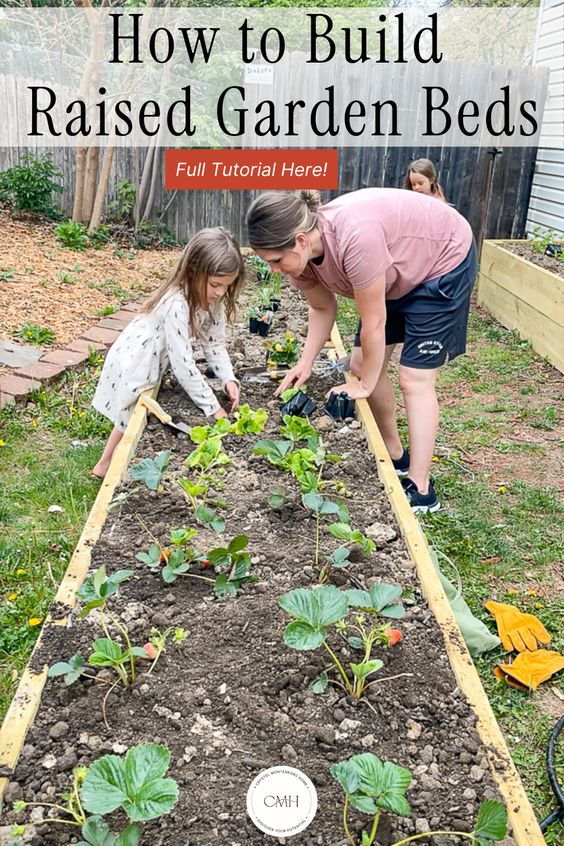Making your own tall outdoor planter boxes for the garden is easy and affordable! Learn how to build your own raised garden bed against a house with this DIY tutorial. Get started on your gorgeous planter boxes today – great for beginner and experienced gardeners alike!

In my heart, I’ve always been a gardener, but never in real life until now. After moving from a desert, we finally own our own home and live in a place where things. just. grow. I’ve had dreams of having a large garden one day, and while this is not quite my dream garden, it’s a great start!
I installed a basic drip system in these tall outdoor planter boxes, and I wrote a blog post with all of the instructions.
This post includes affiliate links.
Lumber Shopping List
- 2-in x 12-in x 16-ft Pressure Treated Pine
- 4-in x 4-in x 8-ft Pressure Treated Pine
- 2-in x 2-in Furring Strips
Supply List
Tools
- Staple Gun
- Dewalt Drill
- Miter Saw
- Various Lawn Care Tools
Step 1: Location For the Tall Outdoor Planter Boxes
The southwest side of our house gets the best sunlight so we picked that area for the tall outdoor planter boxes. Then we prepped the area by clearing away grass and weeds, relocating my peonies that lived there, and then leveling it out a bit so the long wooden planter boxes would sit evenly.

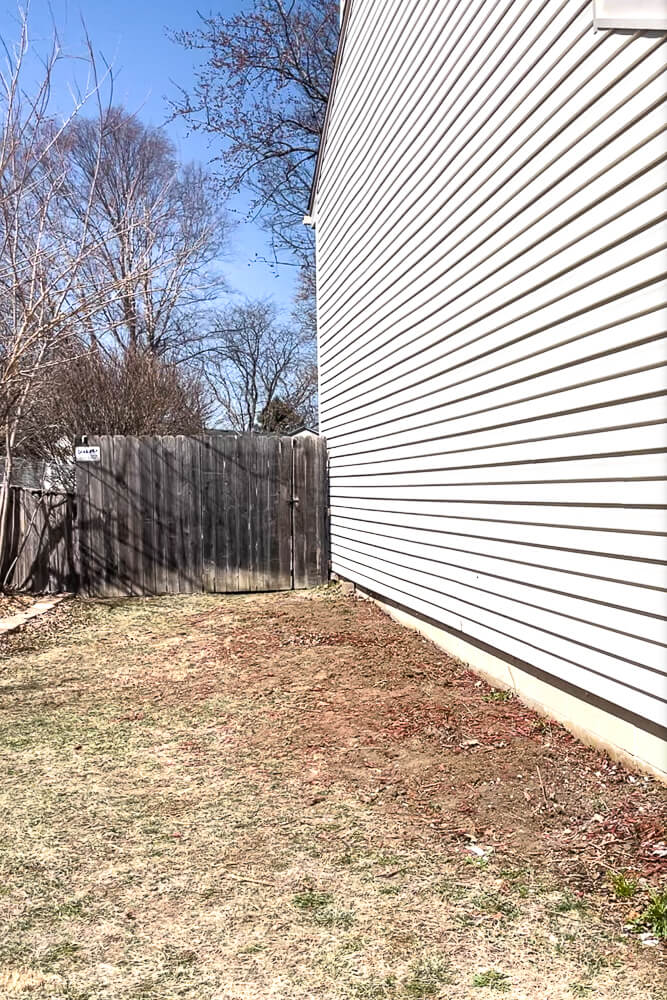
Step 2: Frame for the Tall Outdoor Planter Boxes
Our finished boxes are 32′ long and 24″ tall because that’s the measurements of 2 pine boards put together, which means less measuring and cutting. The width is customizable, and we settled on 30″. Because we’re working with our narrow side yard, I didn’t want to make them so wide that I couldn’t reach the back row without going around to the other side of the box, which on one side backs up to the house.
We cut the 4″ x 4″ corner posts into 24″ blocks. These pieces are our wall supports. Then we laid the wall boards flush on the post, and screwed them together. Clamping the wall boards together helps keep them tight and in place while drilling so soil or water won’t leak out of the walls.
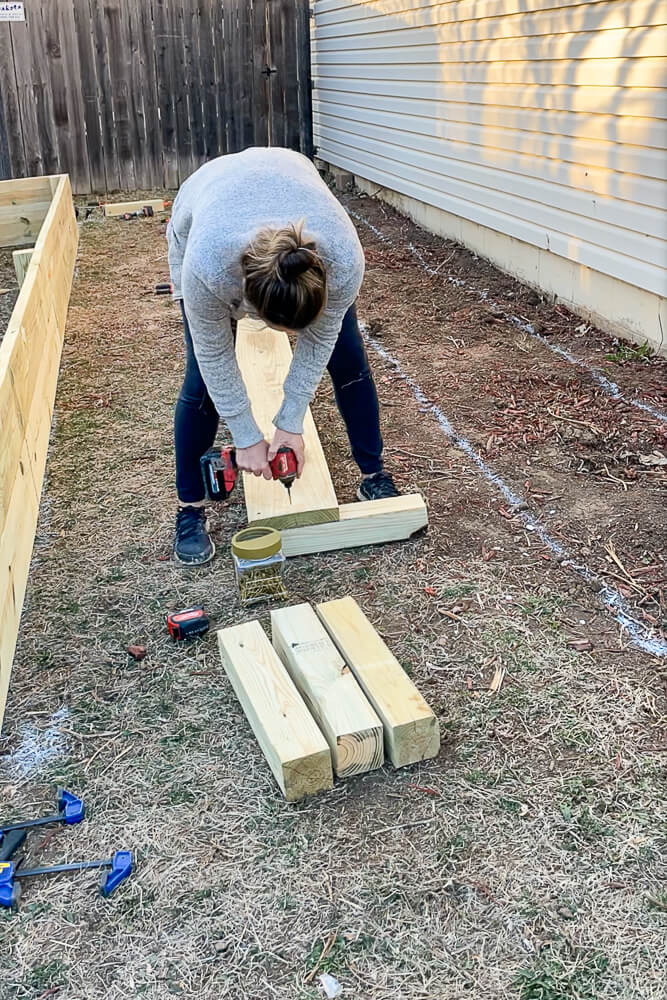
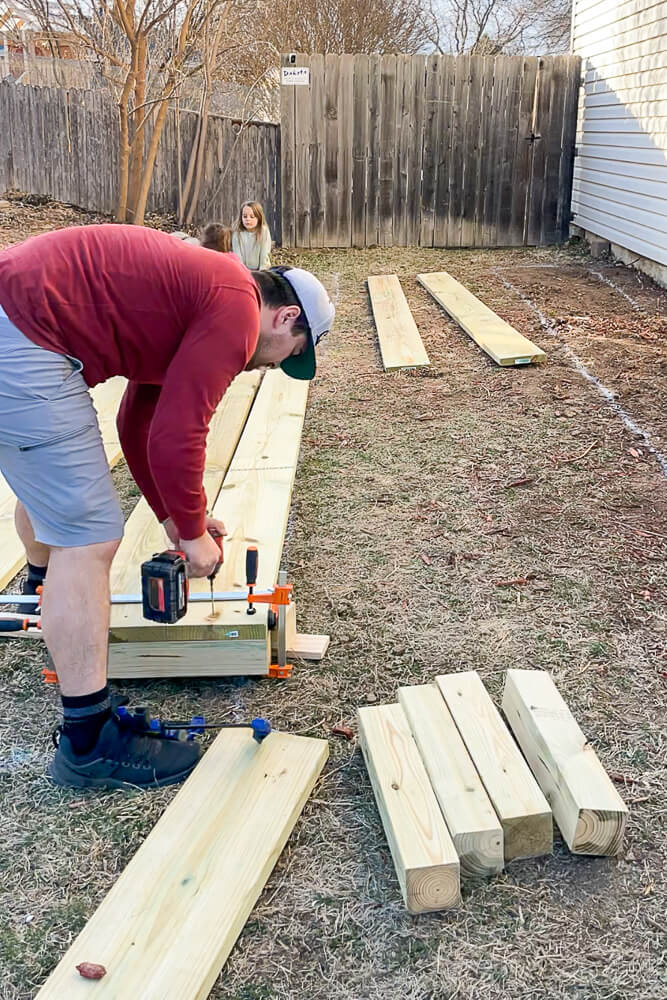
On the opposite end of the wall boards, we set them on top of a post, leaving 2″ for additional wall boards. Then we screwed the ends into the post, and then screw another 2 wall boards into that same post. In the image below you’ll notice how the wall boards “share” a post. Make sure everything is clamped and flush before screwing them together. We made 4 of these 32′ long walls for the tall outdoor planter boxes.
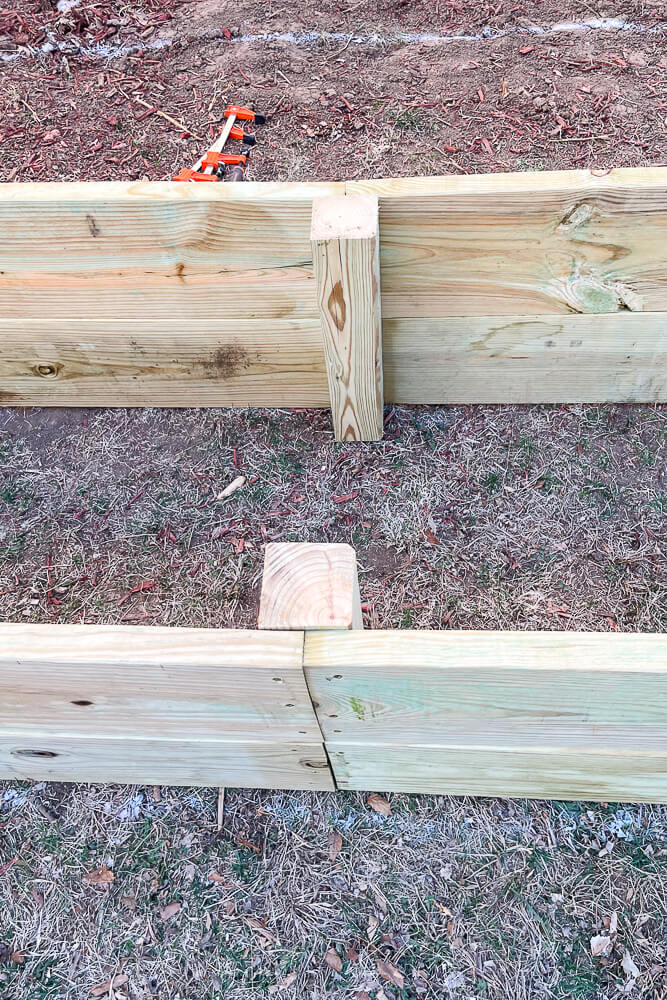

Then with the help of another person, hold the sides of the walls up so you can measure the width you’d prefer. Ours is 30″, and we cut 4 wall boards for the short sides to finish off our frame. We screwed them into the posts and used clamps to keep everything tight and flush. A great tip is to set the frame on top of a scrap piece of wood to keep it all flush while securing it together.
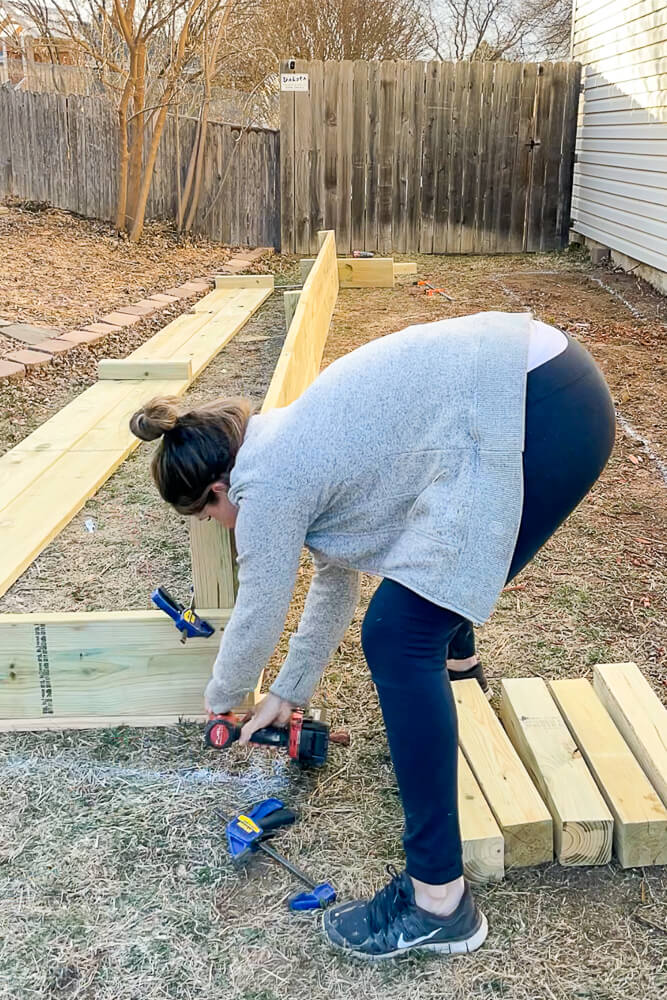
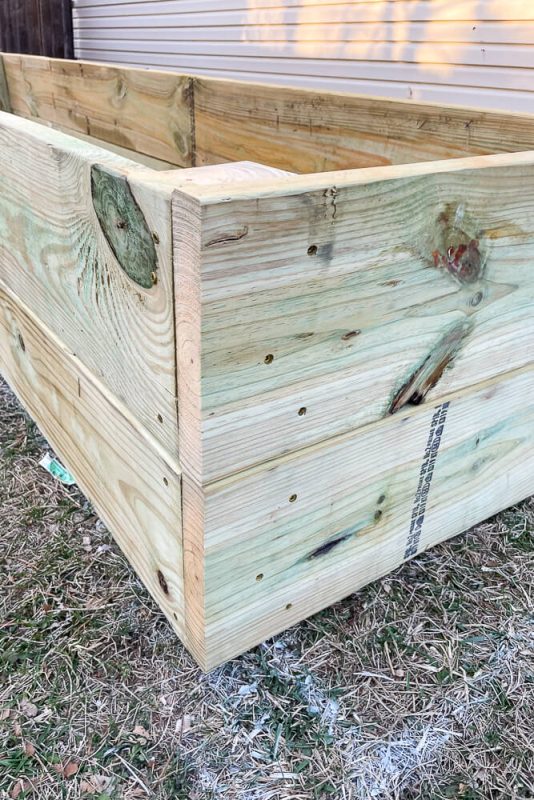
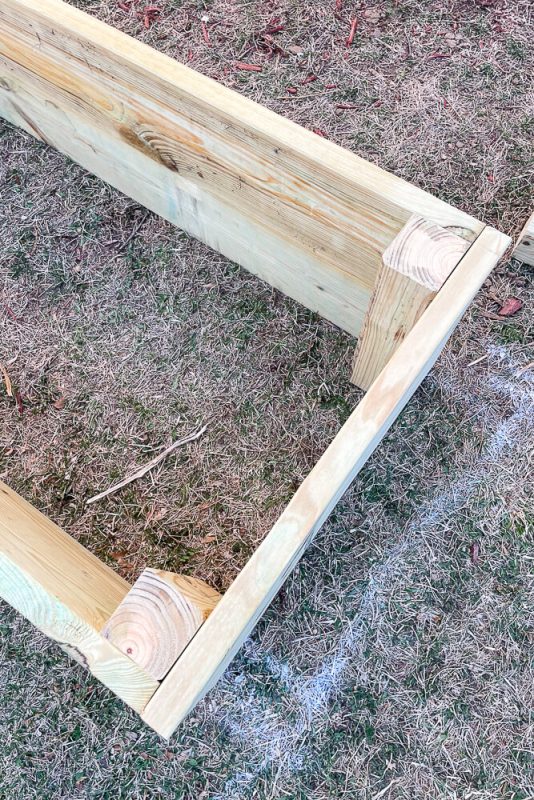
Our garden box frame for the tall outdoor planter boxes looked great at this point, but it needed more support because of the weight of the soil to prevent bowing. We cut pieces of scrap wood the size of the inside frame (approx. 27″) and screwed them into the middle posts. Later in our project, we ended up adding more support pieces.

Step 3: Layering Raised Garden Beds
Our beds are composed of several layers of organic material. Here’s where all those Amazon boxes you toss into your garage come in handy.
We lined the bottom of the beds with cardboard because it’s a natural way to keep out pests and weeds. Then, we lined the walls with heavy-duty painters’ plastic drop cloth and stapled it to the walls. The lining will prevent chemicals from leaching from the pressure-treated wood.
Our neighbor had a huge pile of wood branches they let us have, so those went on top of the cardboard to help improve our garden’s drainage and save us a little money on soil.

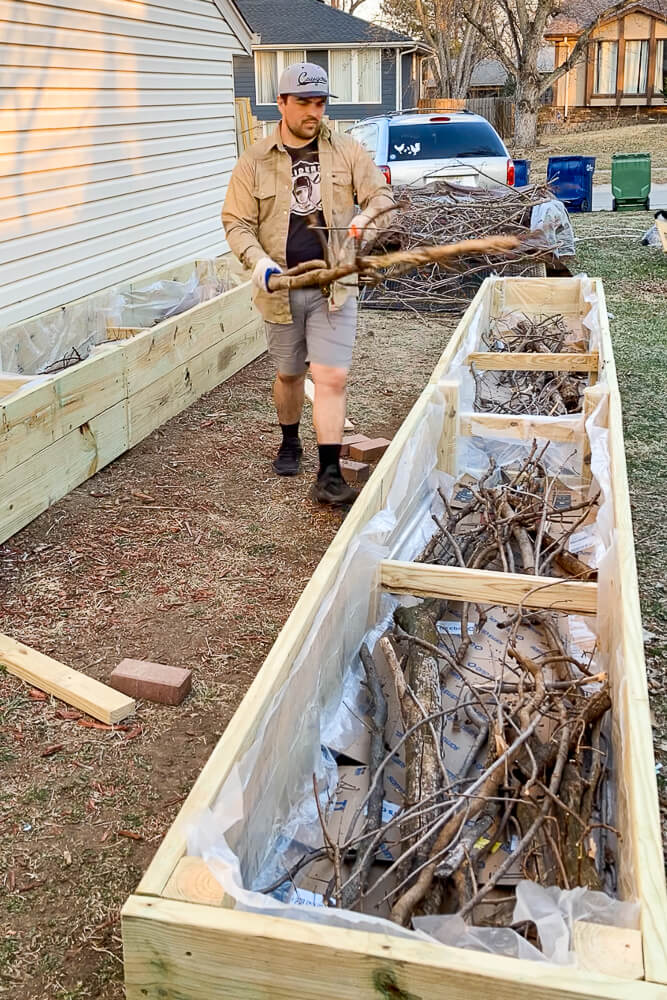
The next layer has been sitting in our front yard for the past year. We paid a company to remove a huge tree last year and when they ground the stump, we asked to keep the wood shavings for this purpose. Those wood shavings went on top of the branches, and then on top of that was compost topsoil we purchased in bulk from a nursery and hauled home in our trailer.
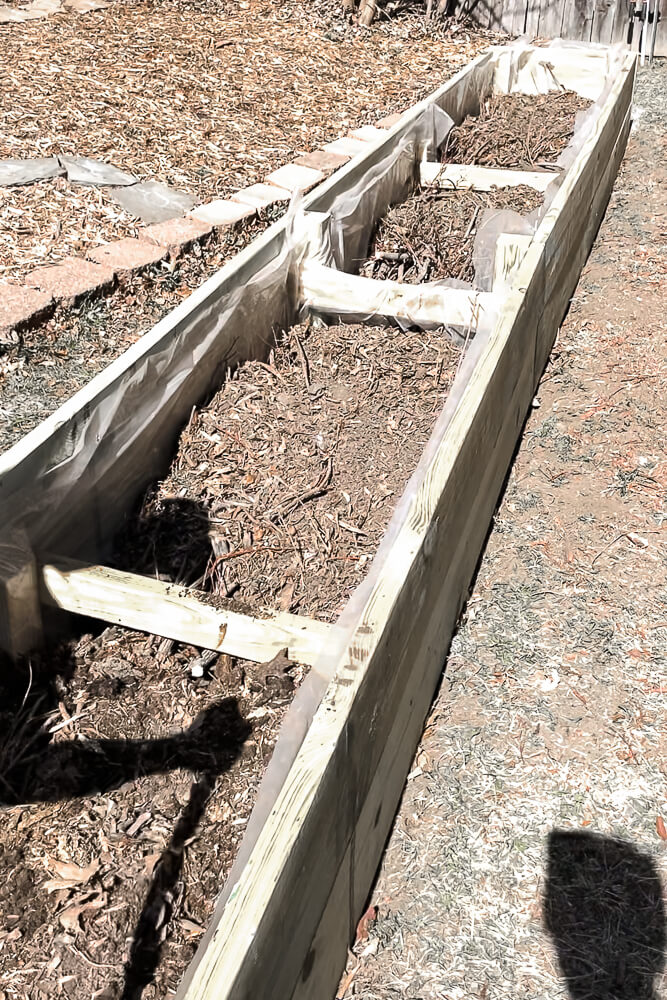
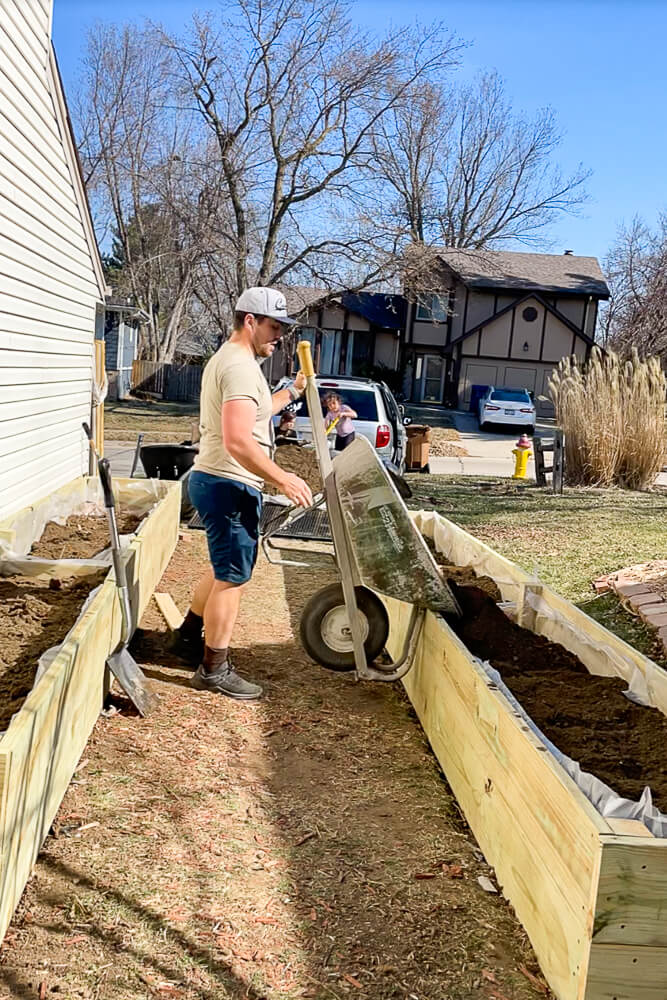
Step 4: Planting Transplants in Tall Outdoor Planter Boxes
We went to the nursery and bought a produce section! In our tall outdoor planter boxes, we planted:
Celery, Peppers, Sugar Snap Peas, Basil, Cilantro, Broccoli, Brussel Sprouts, Onions, Lettuce, Potatoes, Sweet Potatoes, Garlic, Strawberries, Raspberries, and Tomatoes, Tomatoes, and more Tomatoes
Our girls have loved being involved and are proud of their little garden. It’s been an enriching addition to our homeschool curriculum.

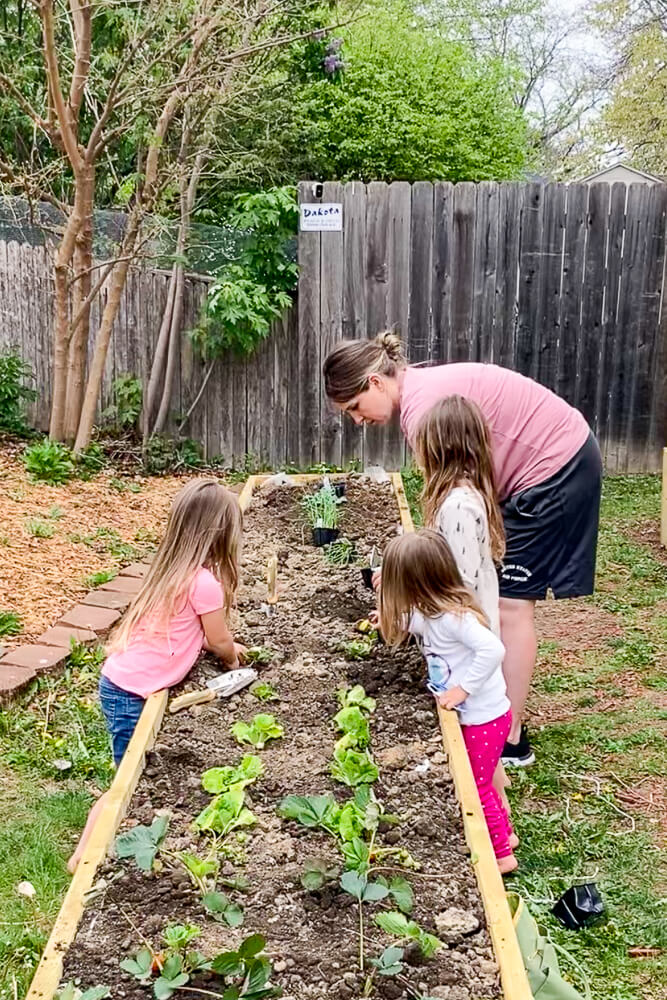

TIPS
Here are some products I’m using to strengthen my garden –
- I love tomatoes and am using a soil and fertilizer booster so they’ll grow nice and big.
- My potatoes are doing so well in these potato grow bags. Harvesting will be a cinch.
- We’re shooting for organic gardening, so we’re using Neem Oil as an insecticide.
- This berry fertilizer promises a “bountiful harvest”.
- We’re using these bamboo plant labels and they look so cute!
- These soil tester kits are easy to use. You just ship the company your dirt, and they’ll analyze your soil and tell you exactly what you need to make it more fertile.
We got the girls involved and they loved using their kids shovel set and Radio Flyer wheelbarrow.
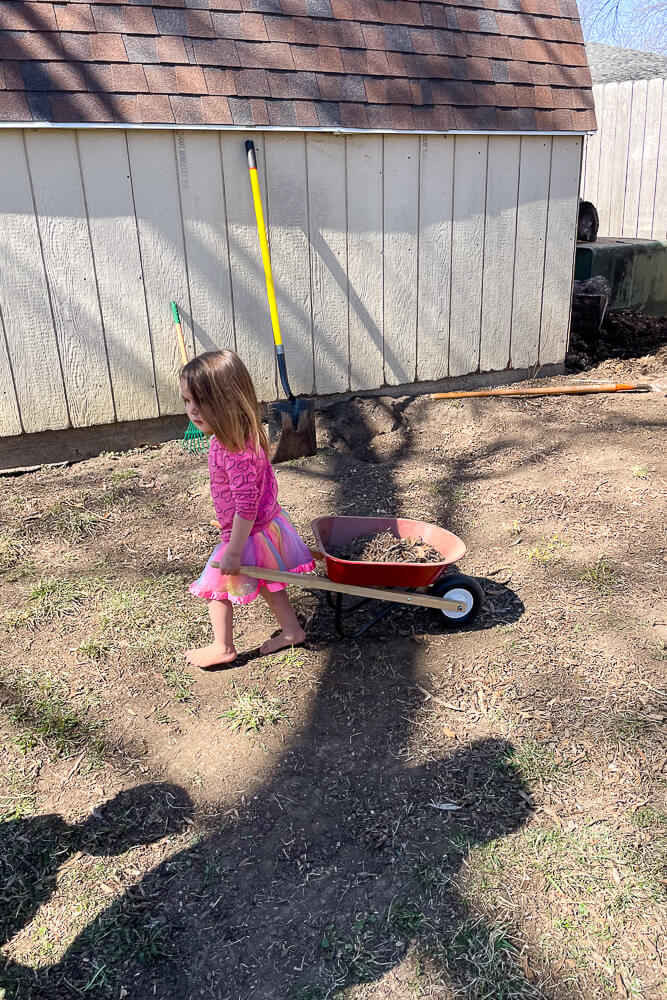
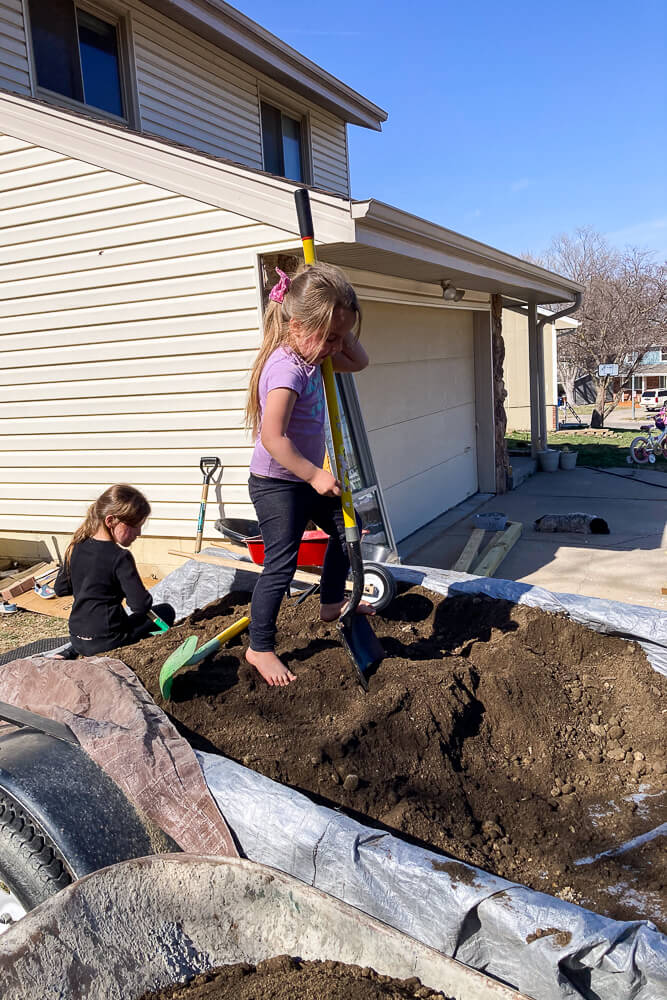
Step 5: Additional Gardening Ideas
Raspberry bushes can overrun a garden, so I planted mine in the actual ground next to the garden boxes. The root control shield I was using to contain the vines needed to be placed about 18″ in the ground, so I dug a trench, placed the shield and filled in the dirt to keep it in place.

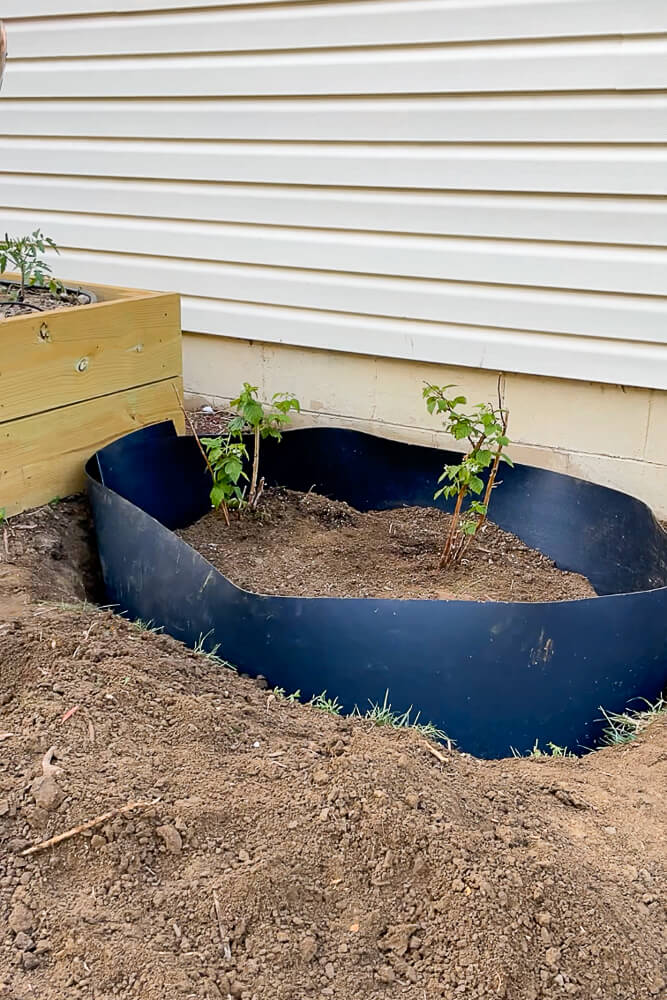
Peas grow best when they can climb, so I set up a super simple pea trellis.
I had some extra 2″ x 2″ furring strips that I cut to 30″ and pushed deep into the dirt so they’d stand up on their own. Then I cut a piece that would lay horizontal on top and screwed it into the vertical strips. The last step was to tie a piece of twine that ran horizontal between the strips, and then 2 pieces of twine that were tied to the top strip and bottom twine.
I twisted my growing pea plants around the twine and since then they’ve taken to it beautifully! I later learned that this wasn’t nearly tall enough. I ended up having to double the height of the pea trellis because they had grown so far above it and were starting to fall over.
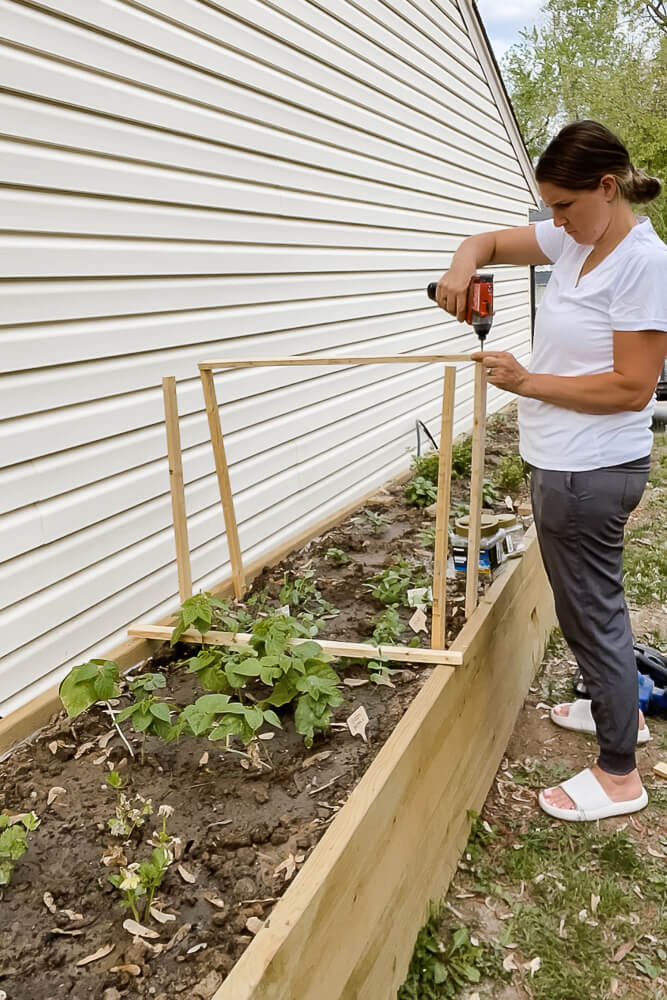
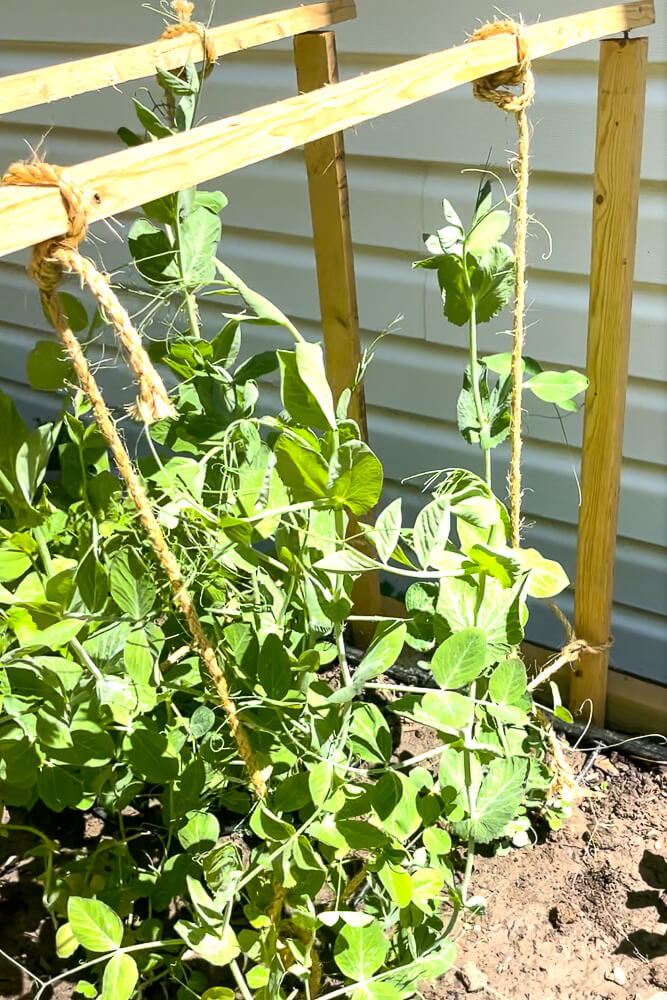
I’m planning on staining these tall outdoor planter boxes, and I’ll update this post when I do, so check back in!
At this point, you can water everything on your own, or you can install a drip system. We chose to use a drip system since I don’t have the time nor desire to stand outside holding a hose several times a day, and you can check out all the details in this blog post.
If you have questions about building your own tall outdoor planter boxes, leave me comment!
XOXO
Crystel

